Amandine's case
by Edouard Broussalian
Here is the case of litlle Amandine, born in March 1992.
I follow her up since june 92, and she often responds well to the
various remedies needed during acute states.
At times, Calcarea eases her abdominal pains and flatulences.
Finally, the problem appeared really last summer, when she became
hateful with everyone, specially with her older sister.
I tried Hyos, Stram, Apis, without notable success, and saw her
again in March 95.
At this time, she coughed almost constantly for one month. When the
cough started, Amandine was treated by a colleague who prescribed Josacyne for a bronchitis. The antibiotic improved well the acute
clinical picture, but then a dry, short cough took place.
The only two signs I could get at the begining were: a loose cough
in the morning (Cough: Loose / morning) and a great
improvement in the open air (Cough: Air / open / amel). With
this two symptoms, many remedies are competing: Bry, Sulph, ...,
Puls (that the mother had already given, without success):
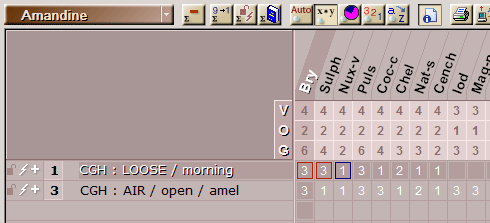
The + sign, at the left of the rubric, indicates the
presence of crossed references.
On the grid, when a grade is framed, then the remedy
presents a relative valorization (it is specific of the
modality).
As this cough seems to correspond to something chronic, I
don't hesitate to introduce some characteristic signs of her behaviour:
the systematic opposition, (Mnd: Contrary), the tendency to bite
(Mnd: Biting):
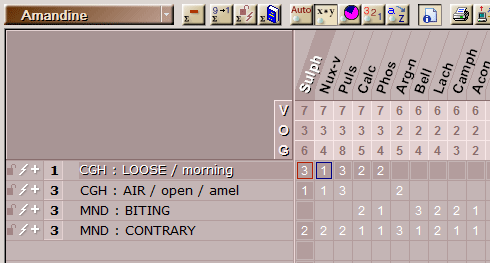
There is apparently no remedy fitting the case.
Calcarea and Phosphorus
are well represented, but excluded by the "amelioration to the open air" modality.
Sulph and Nux-v are excluded by the tendency to bite, from which they are absent,
despite the fact of their relative valorization in the
Cgh: Loose / morning rubric.
Hovewer, if we look at the crossed references of the rubric
Mnd: Biting,
we notice that it is possible to extrapolate.
The three rubrics
concerning us in the generalization process are
Mnd: Strinking, Mnd:
Kicks (because in fact she is expressing violence) and
Tth: Bite. The other items must
remain disabled:
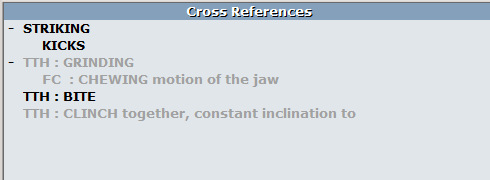
White rubrics are active (they are used by the
generalization process), while gray rubrics are not.
Right shifted rubrics are themselves crossed references from
their respective overlying rubrics.
The only cross reference of the rubric Cgh: Air /
open / amel, is Cgh: Warm / room / agg.
And it must be activated.
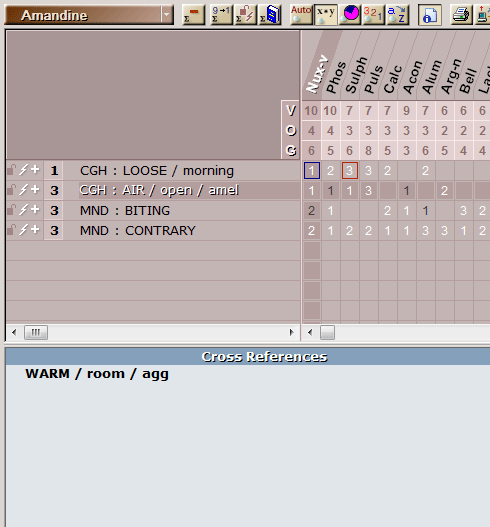
When a grade is drawn in
black, this means that the corresponding remedy is absent
from the original rubric,
but present in one of its active crossed references.
This allow us to put Nux-v to the forefront, as it presents
a tendency to strike.
We must also notice the score of Phosphorus, pushed toward the front of the
stage thanks to the rubric Cgh: Warm / room / agg,
only crossed reference of the most discriminating symptom: the cough
ameliorated in open air.
So now, let's establish a differential diagnosis between Nux-v and Phos, wich are the only remedies to cover the all case (with the
help of the generalization
process):
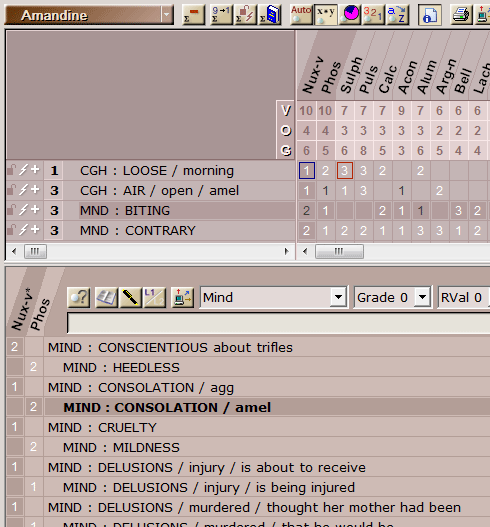
The differential diagnosis
first priority is to search for opposite modalities between
remedies.
This screenshot displays a list of rubrics, each of them
being followed by one or more opposite rubrics shifted to
the right.
PcKent give us a list of discriminating rubrics, among wich 2
are particularly interesting:
- In the Mind section, we see that Phosphorus is improved by consolation (Mnd:
Consolation / amel), whereas Nux vomica is
aggravated. And the purpose of Amandine's (sometimes
violent) expressions, is to be cuddled by her mother,
etc.
- Further down, the differential
diagnosis also displays the amelioration with warm
drinks for Nux vomica, and the contrary for Phosphorus (Cgh:
warm / fluids). And Amandine has always hated
warm drinks. It ever seems that hot milk only serves to
worsen her cough.
We finally get the following repertorizing grid:
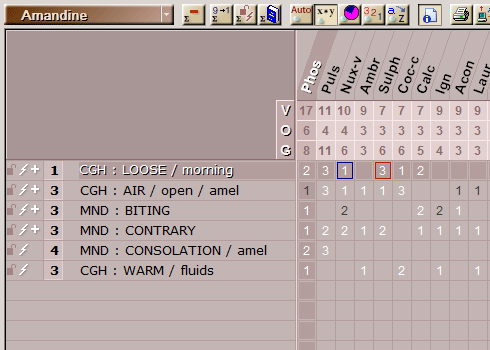
Here is the way Phosphorus gave me great results with
Amandine, after eliminating the cough in less than 24 hours.